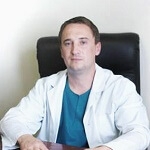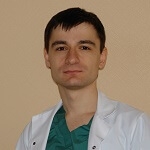Hair autotransplantation is, of course, the main and sometimes the only operation that can restore hair in case of baldness. But if a patient, for example, with thin sparse hair, wants to make it thicker, without wasting time and effort on stimulating its growth by non-surgical methods, he can also be offered a hair transplant procedure.
Our leading experts in the field of trichology offered their views on the indications for hair transplantation, on the compatibility of this operation with other procedures for the scalp, on issues that concern patients with hair transplantation.

Andrei Petakh
candidate of medical sciences, plastic surgeon
Perlyna Plastic Surgery Clinic, Kyiv

Grishay Sergey Evgenievich
Plastic surgeon
Clinic of plastic surgery "Perlyna", Kyiv
When is hair transplantation recommended?
Do you sometimes advise against it or use other methods of hair restoration?
Hair transplantation is indicated for anyone who wants to add thickness to their hair or restore previously lost hair in any places, such as a scar on the scalp, eyebrows, eyelashes, as well as restore them for male (androgenetic) hair loss (alopecia). Hair transplantation can be offered if conservative methods of treatment are ineffective and if the patient does not want to spend a lot of effort, time and money on shampoos, creams and pills. Of course, in the early stages of alopecia, it is advisable to refrain from transplantation, and try non-surgical methods, but the final decision always remains with the patient.
What questions do patients usually ask about hair transplantation?
The questions for all patients are about the same. Is one transplant enough to restore hair density? How long does the operation take? Will hair grow soon? What is the cost of a hair transplant for me? How to care for transplanted hair? Will the transplanted hair fall out?
During the consultation, we try to give the most accurate and honest answer to all these questions, so that the patient really understands what he will need to face during and after the transplant.
Can a hair transplant be combined with therapeutic and cosmetic treatments for the scalp and hair?
It is not only possible, but also necessary, to combine transplantation with other procedures. Combining all modern methods of non-surgical treatment, you can achieve better engraftment, get a quick rehabilitation and, as a result, a better result. A conservative treatment plan is selected individually for each patient and a road map for the comprehensive treatment of hair loss is prepared for him in detail.
What is the survival rate of the transplanted hair? Are reoperations required? Are they possible?
Naturally, the result of the operation depends on many factors - what is the natural thickness of the hair, what color, thickness, what hairstyle will the person wear? Unfortunately, it is impossible to restore the natural density at a time, but you can always get a good or satisfactory result. Therefore, we always warn that if necessary and if the patient wishes, it is always possible to make a second transplant, thereby adding hair density in the previously transplanted area. Taking into account the use of modern procedures, such as plasma therapy, it is possible to achieve up to 100% survival rate of transplanted hair. Read more in the material Plasma therapy for hair loss is not a panacea,
Is there a need for preliminary psychological preparation of the patient for hair transplantation? What is the rehabilitation period after the operation? Necessary conditions that the patient must comply with?
Often, patients who come for hair transplantation have long recognized the problem and have tried different treatments, such as shampoos, serums, etc. Special psychological preparation before transplantation is not required, it is enough for the patient to trust his doctor and really understand what can be obtained in the end.
Special rehabilitation after the operation is not expected. Usually the bandage on the back of the head remains for a day or two, the places where the grafts were taken heal very quickly, after a week it is already difficult to find out what was done and where. Recipient places, that is, where they were transplanted, also heal quite quickly without visible traces. However, a transplant is not yet a guarantee of a 100% result, and it is important that the patient does not disappear waiting for his hair to grow, but visits his doctor according to the schedule.
Source estet-portal.com






Add a comment